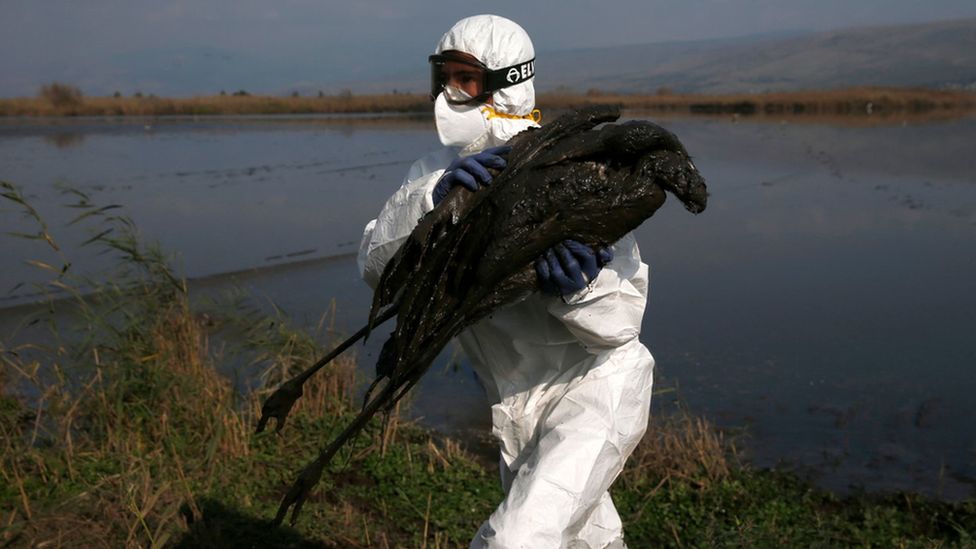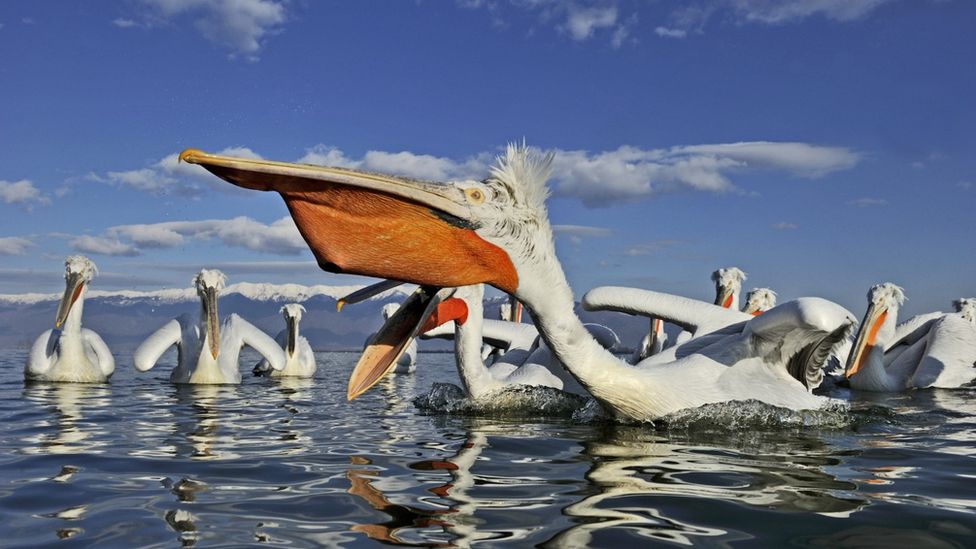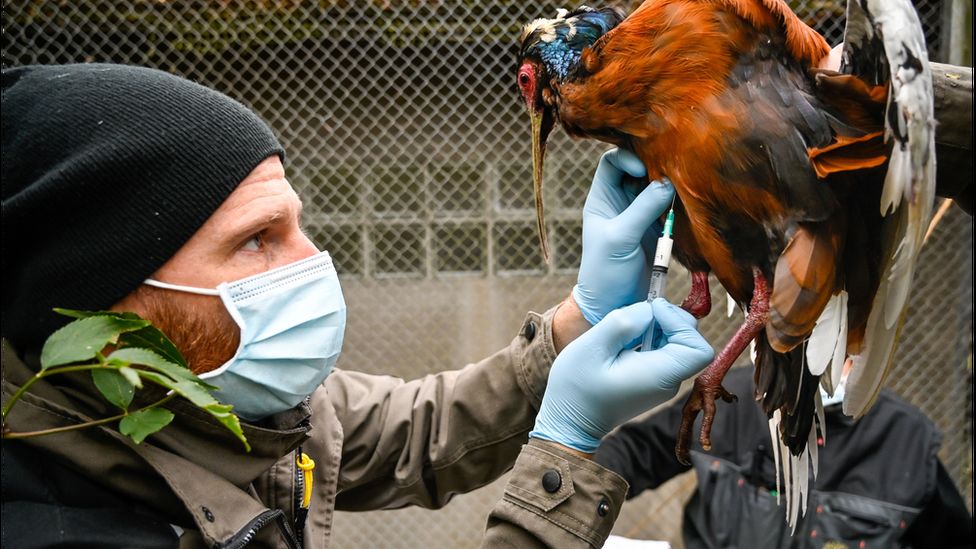The highly infectious H5N1 strain of the disease is responsible for the deaths of hundreds of thousands of wild birds and millions of domestic ones.
What is bird flu and how deadly is it?
Bird flu is an infectious disease of poultry and wild birds that has been around for a century. It usually flares up in autumn before fading away.
"It originated amongst ducks in Europe and Asia, and spread to other birds," says Paul Digard, a professor of virology in the Roslin Institute at Edinburgh University.
The H5N1 virus, which is the most prevalent strain now, was first reported in China in 1996 and has broken out sporadically ever since.
However, this year the virus has persisted for much longer than usual.
The H5N1 strain is deadly and can spread through entire flocks of domestic birds within a matter of days, through birds' droppings and saliva, or through contaminated feed and water.
The current wave of bird flu is the worst one ever in Europe, and in the US.
"A hundred and sixty million domestic birds worldwide have been killed by this virus, or have had to be culled by farmers to contain it," says Professor Munir Iqbal of the UK's Pirbright Institute, which specialises in animal welfare.
"This includes 100 million domestic birds in the US and Europe."
In western European countries, it has led to egg shortages in the shops and fears of a turkey shortage at Christmas.
In the UK, about half of the 1.3m free range turkeys produced for Christmas have died or been culled due to bird flu.
What's so unusual about this outbreak?
More wild birds than ever before have been killed by bird flu this year - with sea birds being especially hard hit.
The current virus has affected 80 different bird species," says Professor Iqbal. "For example, it has killed 40% of the skua population in Scotland, and 2,000 Dalmatian pelicans in Greece."
This "huge outbreak" has also spread into species such as seals and foxes, says veterinary expert Dr Louise Moncla of the University of Pennsylvania in Philadelphia, US.
"These outbreaks began in Europe, then spread to North America, and unlike past outbreaks, have not died out," she says.
We are in the middle of an "unprecedented wildlife disease outbreak, the breadth and scope of which is staggering", says Dr Rebecca Poulson of the University of Georgia, US.
Scientists are unsure why this outbreak is so much worse than others. It may be that the virus has mutated to enable it to spread more readily from bird to bird, or to hang around longer in the environment.
Dr Nancy Beerens, bird flu expert at Wageningen Bioveterinary Research in the Netherlands, which analyses suspected bird flu samples, says the virus may now be ubiquitous in wild birds.
"As the virus now has infected many wild bird species, it becomes unlikely that it will disappear again from the bird population," she says.
What's being done to tackle the outbreak?
China has been vaccinating its domestic poultry flocks.
However, other countries avoid this because it is hard to judge which birds have been made immune by the vaccine and which ones have not - and so the meat and eggs from vaccinated flocks cannot be sold abroad.
"There are strict export controls when a country decides to vaccinate," says Dr Maurice Pitesky of the School of Veterinary Medicine, University of California, Davis.
Governments in EU countries and North America have instead generally told their farmers to cull all the poultry in any flock in which bird flu has broken out.
Farmers in the UK and France have also been told to bring free range poultry flocks indoors, to stop them being infected by wild birds.
Despite the commercial drawbacks of vaccinating poultry, governments in France and the Netherlands have begun trials of vaccines to try and bring the bird flu epidemic under control.
Is bird flu a risk to humans?
In some instances, humans have caught bird flu when they have come into close contact with infected birds.
"The current strain of H5N1 currently seems to be low risk for this," says Prof Digard.
However, he says: "We need proper surveillance of how far it is spreading, by monitoring wild birds and getting reports from vets dealing with domestic animals."





Comments
Post a Comment